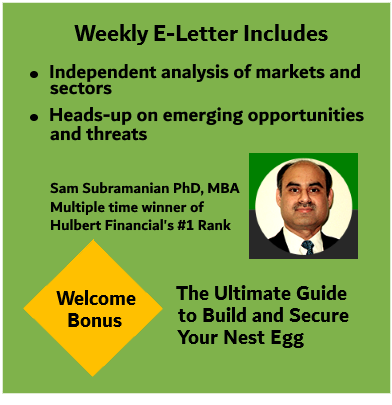Buy and hold or “don’t buy a stock if you don’t want to own it for the next 10 years” are commonly mentioned as worthwhile maxims to live by to succeed as an investor. While those maxims hold, translating them to “buy and forget about it” commonly becomes a recipe for disaster. The performance of supermarket stocks aptly illustrates this point.
With food purchases being a necessity of life, supermarkets have long been hailed as relatively “safe,” non-cyclical investments. While foods are indeed a necessity of life, there is no need to purchase them from a particular supermarket. Competition in this industry is brutal and supermarket shares have been far from safe.
Take the case of Winn-Dixie Stores (NYSE: WIN), the Jacksonville, Fla.-based supermarket chain. This was once a stodgy, steady company that doubled its earnings and dividends from 1988 to 1998. That was before Wal-Mart (NYSE: WMT) came in with its supercenters and its one-stop shopping value proposition. Price competition and shrinking volumes took a toll on Winn-Dixie through the years and now the company is operating in the red. Earlier this year, Winn-Dixie’s board suspended future dividends. Its stock languishes below $7, a fraction of the lofty $59 it traded at in 1998.
Other supermarkets such as Kroger (NYSE: KR), Safeway (NYSE: SWY), and Albertson’s (NYSE: ABS) have also suffered since Wal-Mart supercenters came into their neck of the woods. Recently, these companies also took a hit from the workers’ strike in California. The strike provided opportunities for warehouse chains such as Smart & Final (NYSE: SMF) as well as natural foods supermarkets such as Whole Foods Market (Nasdaq: WFMI) to poach Kroger, Safeway, and Albertson’s customers. Shares of those three companies are down between 50% and 65% from their highs set in 1999-2000.
Unique productsThe lesson? While “buy and hold” or “don’t buy a stock if you don’t want to own it for the next 10 years” are good maxims, don’t lose sight of the company’s ability to strengthen or at least preserve the moat around its business.
The obvious question for value investors: Do the years of decline in supermarket share prices present an opportunity or is it just a value trap?
The answer depends on the company and how strong the moat is. In a business where scale matters and discounts from suppliers are tied to volume, Wal-Mart, with close to $260 billion in annual revenues, is a 900-pound gorilla for any supermarket chain to take on. The largest supermarket chain by comparison, Kroger, has only about $50 billion in annual revenues, and the next two largest players, Safeway and Albertson’s, have annual revenues of about $35 billion each. However, some factors can still enable select supermarkets to fare better than others, including unique product offerings, protected geography, and size.
Given the wellness trend in the U. S., any retailer who caters to this need has a leg up on the competition. Austin, Texas-based Whole Foods Markets is the nation’s largest natural foods supermarket chain, offering a broad selection of organically grown products. The nation’s second-largest natural foods supermarket, Wild Oats Markets (Nasdaq: OATS), may whet a value investor’s appetite. Distribution problems, which are likely going to be short-lived, have forced a discount on Wild Oats shares. The company trades at a 28 forward P/E compared with Whole Foods’ 32.
Supervalu (NYSE: SVU) is a chain that out-competes others on price. Although not a pure play in supermarket retailing, Supervalu operates 1,483 stores, of which 821 are licensed extreme value stores under the ‘Save-A-Lot’ banner. The company derives its cost advantage by focusing on the sale of about 1,250 high-volume custom brand items. Supervalu also distributes goods to about 3,130 stores. Its shares recently changed hands at a forward P/E of less than 12.
Protected geography
In industries like food retailing, geography can provide significant competitive advantages. Take the case of the densely populated Northeast. With relatively few pockets of large vacant land, it is difficult for Wal-Mart to penetrate this area. This region has also been in the limelight of takeover activity. Albertson’s recently agreed to purchase Shaw’s, a leading New England grocer, for close to $2.5 billion.
Pathmark (Nasdaq: PTMK), a publicly traded regional supermarket chain, has about 145 stores concentrated in New York, New Jersey, Pennsylvania, and Delaware. Pathmark recently lowered its earnings forecast, which caused its shares to be marked down. With a forward P/E of about 10, Pathmark may be an interesting value selection, but the possibility of a buyout adds spice to this grocer.
Size
Among the big three supermarket chains, Albertson’s offers some attraction to the value investor at a forward P/E of less than 14. The Boise, Idaho-based supermarket is only one among the big three to sport a dividend. At the current quote, the dividend yield is about 3.3%, which is right about the level that Fool dividend guru Mathew Emmert looks for in Motley Fool Income Investor. Albertson’s has also shown some penchant for acquisitions by acquiring American Stores in 1999 and Shaw’s more recently. The Shaw acquisition adds 200 stores to make Albertson’s a 2,500-store chain. If the company can continue to acquire and successfully integrate publicly and privately held regional chains, this David perhaps can take on the Wal-Mart Goliath. As of March 3, 2004, about 2.5% of the Legg Mason Value Trust’s (Nasdaq: LMVTX) assets, managed by famed value investor Bill Miller, were invested in Albertson’s.
Shares of supermarket chains traditionally have correlated well with employment and inflation, both of which seem to be on the rise. Against this macroeconomic backdrop, shares of select supermarket chains such as Wild Oats Markets, Supervalu, and Albertson’s may be hunting ground for the value investor. Pathmark has some appeal from the land-locked location of its stores as well as a buyout possibility.
Make no mistake, shares of supermarket companies aren’t “safe.” But they very well may present opportunities for the value-seeking investor. Just remember not to practice amnesiac investing if you choose one of these companies. You can’t “buy and forget about it.” The Wal-Mart juggernaut and stiff competition will always be a threat, so keep your eyes wide open.
Guest Fool contributor Sam Subramanian is the managing principal of AlphaProfit Investments, an investment research firm based in Houston, Texas, that publishes the AlphaProfit Sector Investors’ Newsletter. Sam owns shares in the Legg Mason Value Trust. The Motley Fool has a discloser policy.

 Sick buying high & selling low? Fed up of the fees you pay? Tired researching investments? End your financial pain now. You have the opportunity to
Sick buying high & selling low? Fed up of the fees you pay? Tired researching investments? End your financial pain now. You have the opportunity to 

 DEC. 1993 to DEC. 2023
DEC. 1993 to DEC. 2023





